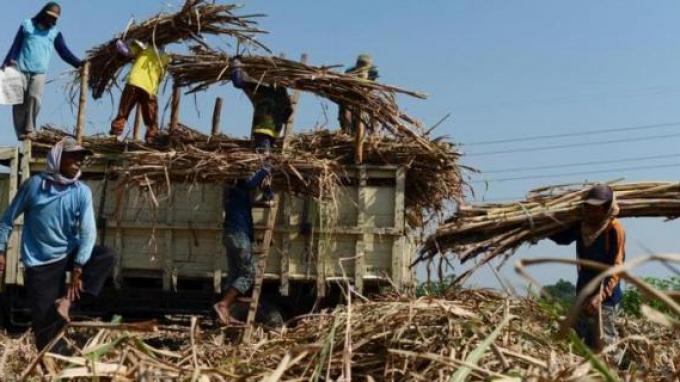03 Mar 2016

In 2013, its sugarcane production has increased again to more than 105 million tons and its export reaches 9.3 million tons.
In 2014, Thailand's sugar production reached 11 million tons with a local consumption of 2.5 million tons/year.
“Now Thailand is recorded as one of the largest sugar exporter in the world,” says Sahat.
Thailand is now far leaving behind Indonesia which used to be the world's second largest sugar producer in the 80s. Now Indonesia has become a sugar importer.
One of the causes of the low sugar production in Indonesia is the issue of efficiency. Especially in terms of sugarcane, because the average level of sugarcane yield in Indonesia only ranges from 5-6 percent. It is far lower than Thailand's which reaches more than 10 percent.
There are many factors that cause this. For example, the sugarcane land which is now much reduced, the irrigation system which is not good yet, uneconomical fertilizer, and the lack of farmer's capital.
If this can be overcome, there is also another factor that causes the inefficiency of sugarcane production into sugar.
The poor cultivation management sometimes results in lower sugarcane yields from the farmers. The longer the sugarcane is dry or delayed in the harvest, the lower the yield result will be or not at its best.
“For example, in terms of sugarcane harvest and its transportation to the factory. It often happens that the sugarcane farmers bribe the sugar factory to get their land harvested first so that their sugarcane harvest will not dry out and its yield will be good,” says Sahat.
In order to increase the sugarcane yield and efficiency in the production process from sugarcane into sugar, a breakthrough must be made by the government which works in partnership with the private sector.
Starting from the credit granting, good cultivation management, to the optimal harvest and production process.
In addition to the revitalization of the sugarcane factories so that they can produce a maximum yield and their production capacity can be increased.
If this efficiency can be carried out well, then the government purchase price (HPP) for sugar cane can be created.
Of course, this HPP for sugarcane is created with a price that is attractive to the farmers and encourages them to grow sugarcane which will produce sugar.
Editor: Toni Bramantoro
http://www.tribunnews.com/bisnis/2016/03/02/dari-tebu-ke-gula-kurang-efisien-di-indonesia?page=3
© Inacom. All Rights Reserved.